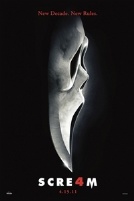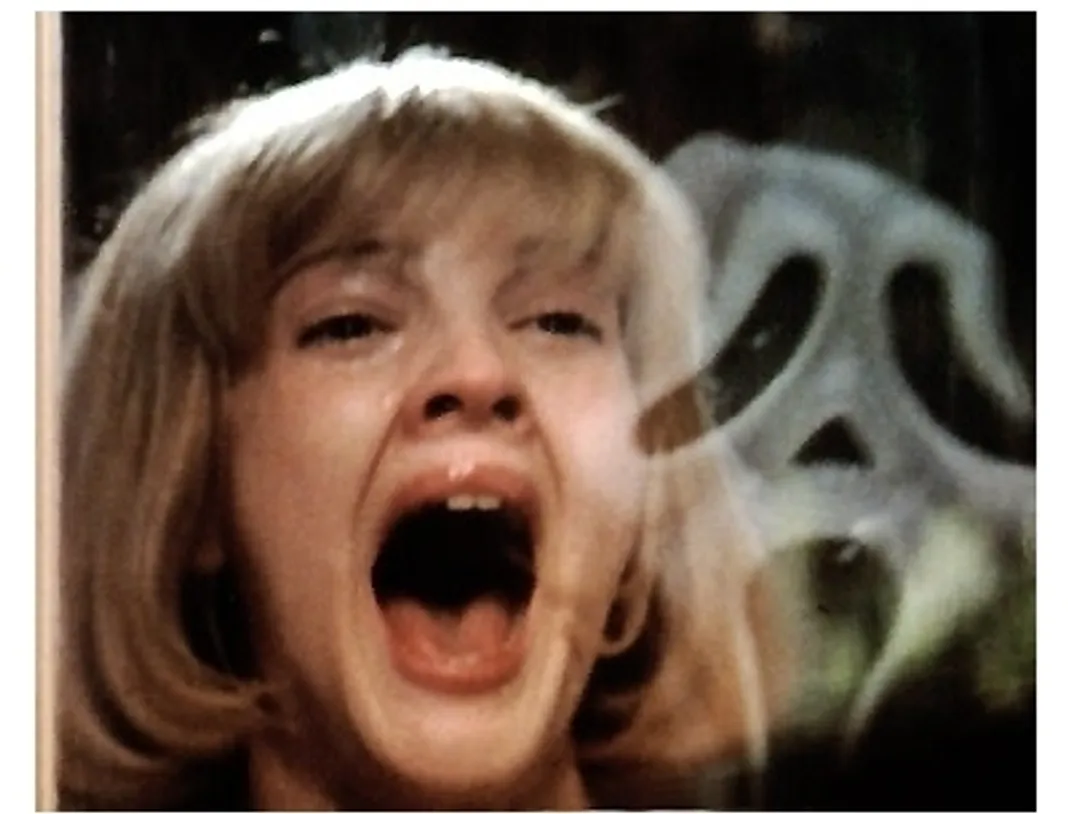 Like the dolts in bad horror movies who are eventually filleted for their misconception, we assumed the Scream franchise was dead and foolishly turned our backs on its corpse. But slowly it got back to its feet, and this Friday will mark its bloody, glorious return to theaters as Scream 4. I was very early in my teenage years when the first Scream was released in theaters and, in fact, didn’t catch it until it hit video. I remember it being one of my favorites for many years, but it had been some time since my last viewing, so I purchased the new Blu-ray set as an excuse to see how well it had aged.
Like the dolts in bad horror movies who are eventually filleted for their misconception, we assumed the Scream franchise was dead and foolishly turned our backs on its corpse. But slowly it got back to its feet, and this Friday will mark its bloody, glorious return to theaters as Scream 4. I was very early in my teenage years when the first Scream was released in theaters and, in fact, didn’t catch it until it hit video. I remember it being one of my favorites for many years, but it had been some time since my last viewing, so I purchased the new Blu-ray set as an excuse to see how well it had aged.
Upon revisiting Scream, a few painful truths blister to the surface. There is no denying that Scream is woefully dated. Typically, accusing a film of being dated would be in reference to the fashion, music or technology used. And while the clothing worn by the characters features plenty of flannel, sweaters wrapped firmly about the midsection, and muted, pre-Y2K neon, it is more the mechanics of Scream that date it so terminally. The dialogue is unrepentantly glib even in the brief one-sided conversations between killer and victims. Have you ever revisited Scream and pondered why it never seemed all that scary? When your potential victim pool spends so much time spouting expletives at your slasher and landing enough punches to make the two seem on an even keel, it saps the formidable-ness of your boogeyman and sullies the fright.
As much as those temporal idiosyncrasies unintentionally antiquate Scream, much of the film’s impact is a direct result of the era in which it was made. Overall, the early ’90s was an abysmal time for the horror genre. The drought of respectable titles released in theaters gave rise to direct-to-video houses like Full Moon, which churned out forgettable film after forgettable film. My beloved slasher subgenre was most notably affected as the tentpole franchises impotently limped toward extinction, with Jason Voorhees, Freddy Krueger and Michael Myers taking turns jumping the shark. The one honorable mention in that mess would be Wes Craven’s New Nightmare, in which Wes took a meta approach to his own creation in what would prove to be the warm-up act for his next film, one that would save the slasher film from annihilation and give the genre the kick in the ass it needed.
Craven is by no measure the inventor of the meta horror film; that bloodline travels all the way back to Abbott and Costello and beyond. One need only dust off a copy of 1981’s Student Bodies to understand that Wes Craven didn’t invent the slasher-movie tropes, nor was he the first to perceive them. But Craven was the first to solidify self-awareness into genre doctrine. Part of the reason Scream functions particularly well in this regard is that Craven himself had contributed, within his earlier canon, to the wealth of content that was then universally cited as precedence. It would be one thing for the average film fan to explain the rules of a Spaghetti Western; it’d be quite another for the rules to be read aloud by Clint Eastwood himself. Randy, the particularly prescient movie geek of the franchise, serves as Craven’s mouthpiece for this indoctrination, and his killers are the ominous end result of a life spent obsessing over that dogma.
 So if Scream is little more than a giant wink at horror fans and is a patchwork of references from already established material, why is it so revered? If the filmmakers Freidberg and Seltzer, two people who stretch the definition of the word filmmaker, have taught us anything, it’s that simply throwing as many pop culture references as possible at your audience does not great satire make. Scream stands apart in this regard by establishing its own voice despite its reliance on preexisting works. It strikes just the right balance of demonstrative, title-dropping reference and subtle, more organic allusion to the genre to which it is beholden. It also perfectly taps into ’90s youth culture, both with its cast and the aforementioned glibness, while providing far better writing and production value than the majority of its contemporaries.
So if Scream is little more than a giant wink at horror fans and is a patchwork of references from already established material, why is it so revered? If the filmmakers Freidberg and Seltzer, two people who stretch the definition of the word filmmaker, have taught us anything, it’s that simply throwing as many pop culture references as possible at your audience does not great satire make. Scream stands apart in this regard by establishing its own voice despite its reliance on preexisting works. It strikes just the right balance of demonstrative, title-dropping reference and subtle, more organic allusion to the genre to which it is beholden. It also perfectly taps into ’90s youth culture, both with its cast and the aforementioned glibness, while providing far better writing and production value than the majority of its contemporaries.
It also infused back into the slasher genre something it had been lacking for quite some time: mystery. We became complacent with the idea of knowing the names of our stalkers—Freddy, Jason and Michael—from frame one. But Scream reaches back to the slasher genre’s heaviest inspiration, Italian giallo, and gives us a killer whose identity is kept cloak-and-bloody-dagger until the very end. In the slasher heyday, this was a popular convention made especially indelible in 1980’s Prom Night that somehow had evaporated by the ’90s. The modus operandi of stalking victims via the telephone is another giallo influence. Craven makes this his own by creating an iconic killer who in turn becomes an immortal symbol of evil, living on despite the sequential dispatching of the vessels who wear the cowl.
Scream’s ability to be slick and original despite how often it draws from the well of horror canon is what makes it timeless. This is the reason I consider Scream to be the Pulp Fiction of horror films. No, I am not assigning them equivalent measures of quality; God knows I have grown to detest Craven as a filmmaker after being subjected to insult after cinematic insult over the last few years. But in terms of their identities as homage films that find their own voice and become as indelible as any of the films they are referencing, I think the parallel is sound.


